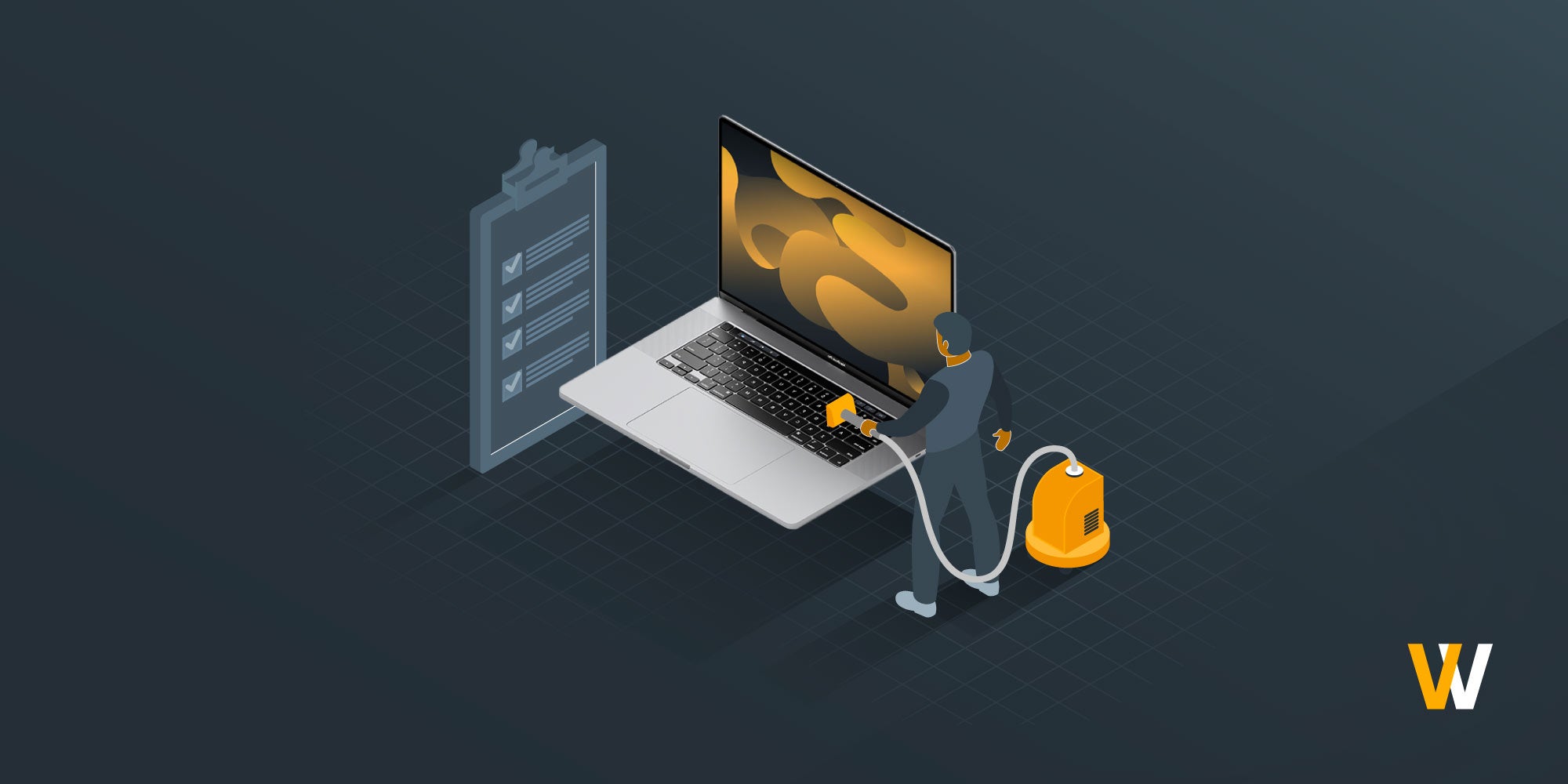IT equipment maintenance: How often should it be checked
 Mara Quintanilla
Mara Quintanilla
IT equipment is a vital component of any business. But like any piece of equipment, it can malfunction and require repairing. That’s why IT equipment maintenance check-ups are as important as procuring the equipment itself. It is like maintaining a car. You don't expect your car to last long if you never get your oil changed, so why should you expect your IT equipment to work flawlessly without routine checks?
What’s more, having faulty assets can be detrimental to your business. The average cost of unplanned downtime was $260,000 per hour, according to a 2016 report by the Aberdeen Group. Unexpected breakdowns can not only slow down production but also impact profitability.
As a remote company, the quality of services you deliver to your customers and the things required to keep your company running smoothly depends largely on the functionality of your IT equipment.
And an interruption in system operations can lead to unforeseen costs associated with lost productivity, downtime, and repair. Unplanned equipment downtime incidents lasted for four hours on average, resulting in a total cost of over $1 million per outage, according to a Vanson Bourne Research study. Most organizations surveyed by Vanson Bourne experienced at least two episodes within the past three years, costing them over $2 million.
Regular maintenance is, therefore, an important aspect of ensuring that your hardware and software continue to work properly and efficiently.
Most businesses know that it is important to regularly inspect their IT equipment, but they do not know how often or when they should do this. In this article, you'll find the full rundown on when to perform IT equipment maintenance check-ups and the type of maintenance you can implement.
When to perform IT equipment maintenance check-ups
In order to make sure that your IT equipment is running smoothly, perform regular maintenance on it. The best time for performing this maintenance depends on the type of equipment being checked. Another factor that can influence maintenance schedules is whether you buy or lease the equipment since that would depend on you or your lease contract.
Here's a guide on how often you should check your IT equipment for maintenance.
1. Check monthly
At a minimum, you should be checking your IT equipment for maintenance on a monthly basis. This includes things like:
- making sure all software is up to date
- making sure all security patches are installed
- checking for disk errors
- checking for memory leaks, etc.
2. Check weekly
If you can swing it, checking your IT equipment for maintenance on a weekly basis is even better. This gives you a chance to catch problems early before they become big issues.
3. Check daily
Ideally, you should be checking your IT equipment for maintenance on a daily basis. This is the only way to really stay on top of things and make sure that your equipment is always running smoothly.
What types of maintenance are there?

Regardless of your business type, there are certain types of IT equipment maintenance that you need to keep in mind. There are many different areas that affect the performance and reliability of your IT systems, including networking, server management, storage, etc.
It doesn't matter how much you spend on your network or how sturdy your servers are, if you don't conduct proper maintenance, your computer network is at risk.
One of the best ways to ensure your IT equipment is working properly is through regular maintenance. This ensures that it will be working efficiently and effectively, so you will not have any problems with your network or system. As we already mentioned, equipment malfunctions can be harmful to productivity, and downtime caused by broken assets can negatively impact your profit.
There are four main types of maintenance strategies: run-to-failure, preventive, condition-based, and predictive. Investing in maintenance is always a good idea and an expected part of running a business. Maintenance statistics show that costs can range between 15% and 40% of total production costs.
Run-to-failure maintenance
Run-to-failure maintenance is when you let the equipment keep running until it fails. It’s known as a corrective form of maintenance that occurs after a piece has broken or malfunctioned. This method of maintenance is relatively inexpensive and can help identify issues that need to be addressed, but it's not a great idea for sensitive equipment. It's good for equipment that's easy to repair or replace and that won't cause significant operational issues if it stops working.
A 2020 survey by Plant Engineering on industrial maintenance reported that 51% of companies use a run-to-failure method, as it is one of the simplest strategies to implement.
Preventive maintenance
The goal of preventive maintenance is to prevent or delay failure and downtime by keeping equipment in good working condition. It’s the opposite of corrective maintenance like run-to-failure. The regular inspection, cleaning, and testing of equipment helps ensure that it will continue operating properly for as long as possible before breaking down completely.
A total of 88% of companies use this maintenance strategy, as reported by Infraspeak, since it allows them to plan ahead and reduce overall maintenance costs.
Unfortunately, most small businesses don't have enough money to hire someone specifically for maintaining their IT equipment. Instead, they rely on internal resources—or ignore the issue altogether until something breaks down completely at an inconvenient time.
Condition-Based Maintenance
Condition-based maintenance is a proactive approach to equipment and machine maintenance. It's based on the principle that machines and equipment should be maintained when they are in good condition, rather than waiting until they are broken. The objective of condition-based maintenance is to minimize costs and maximize productivity by keeping your machines running smoothly.
Predictive Maintenance
Predictive maintenance is a proactive approach to equipment maintenance that uses data and predictive analysis to anticipate the future state of equipment. It monitors the status of assets in real-time, allowing for early identification of potential issues so that they can be resolved before they occur. The goal is to reduce downtime and unnecessary repairs by preemptively fixing problems before equipment stops working.
It can be applied to any type of asset, including IT equipment such as servers. Predictive maintenance relies on historical data about an asset’s behavior over time, which is analyzed using machine learning algorithms to identify patterns based on actual system performance rather than predicted outcomes (as would be done with statistical methods). This allows companies to forecast when certain components might fail—such as hard drives or power supplies—so that they can replace them before they actually break down. And according to Forbes, AI-based predictive maintenance is expected to become the new norm.
What should I be checking on my IT equipment?

-
Broken cables and loose connections
Make sure all of the cables are securely fastened and that they're not rubbing against other cables or sharp edges of devices, which might damage them over time. -
Overheating
Overheating can cause hardware to fail, so check your equipment on a regular basis to make sure it's not getting too hot. -
Clean equipment
Dust build-up in your computer fans and other areas where air is being moved by fans (for example, near the CPU). Dust can cause heat buildup that could lead to degradation or malfunction of components like processors, hard drives, and memory chips. -
Power surges
Power surges caused by lightning strikes nearby or nearby electrical storms can fry some of your equipment (including routers/modems), rendering them useless. -
Damages or broken parts
Damaged or broken parts can pose a hazardous threat so checking them regularly is essential. -
Up-to-date software
Staying on top of operating system updates and antivirus updates will ensure that your computer runs smoothly. -
File clean up
After just one week of using your computer, you collect a bunch of files that you may never use again. Be sure to empty your recycle bin and perform regular disc cleanups. -
Unnecessary software
Get rid of any programs you don’t use anymore to free up space or avoid unnecessary programs running on your computer. -
Optimize startup
Check which programs are set to open on startup to make sure nothing is slowing down your computer. -
Browser files
Clearing your browsing history should be common practice but remember that clearing your browser history can free up memory and even protect your personal information. You don’t want cookies to be tracking your every move online. -
Defragment the hard drive
Another way to keep your computer running smoothly is to defragment the hard drive to rearrange file layout. -
Compliance
Verifying that your employees know what’s expected of them in terms of compliance and caring for equipment is also key to maintaining healthy assets.
Conclusion
It is important for businesses to do regular check-ups on the IT equipment they use every day. Doing so will ensure everything is running smoothly and efficiently and that there aren't any unexpected issues. IT equipment check-ups are ultimately a form of preventive maintenance, which is critical in terms of keeping companies up and running if a problem were to arise.
Taking time each day, week, or month to check every piece of equipment on your network provides a few benefits. It allows you to detect when there is something wrong with some hardware. It also helps you minimize the effects of a network breakdown, whether it's a single desktop or one that affects the entire company. Every IT technician wants to ensure that their network is running smoothly at all times, but performing regular equipment check-ups will help ensure this is always the case.
Most service contracts will include a couple of routine checkups every few months. And it's always a good idea to call in a professional if you see something wrong before it becomes too serious. At Growrk we can provide these IT equipment maintenance services, ensuring that your computing systems stay running smoothly.
We provide guides with the resources to make sure that your systems are properly cared for by professionals and experts, who have years of experience in the IT industry and can solve even the most complex of problems.
Our routine checkups are the most efficient way to ensure that your IT equipment is functioning properly. You'll have a clear picture of how your remote office network or home network is performing, and we'll be able to identify any problems before they become serious issues. No matter what type of network you have in place, we can deliver quality services.
Ready to streamline your IT equipment management? Schedule a demo with GroWrk today and see how our comprehensive platform can empower your distributed teams globally.





